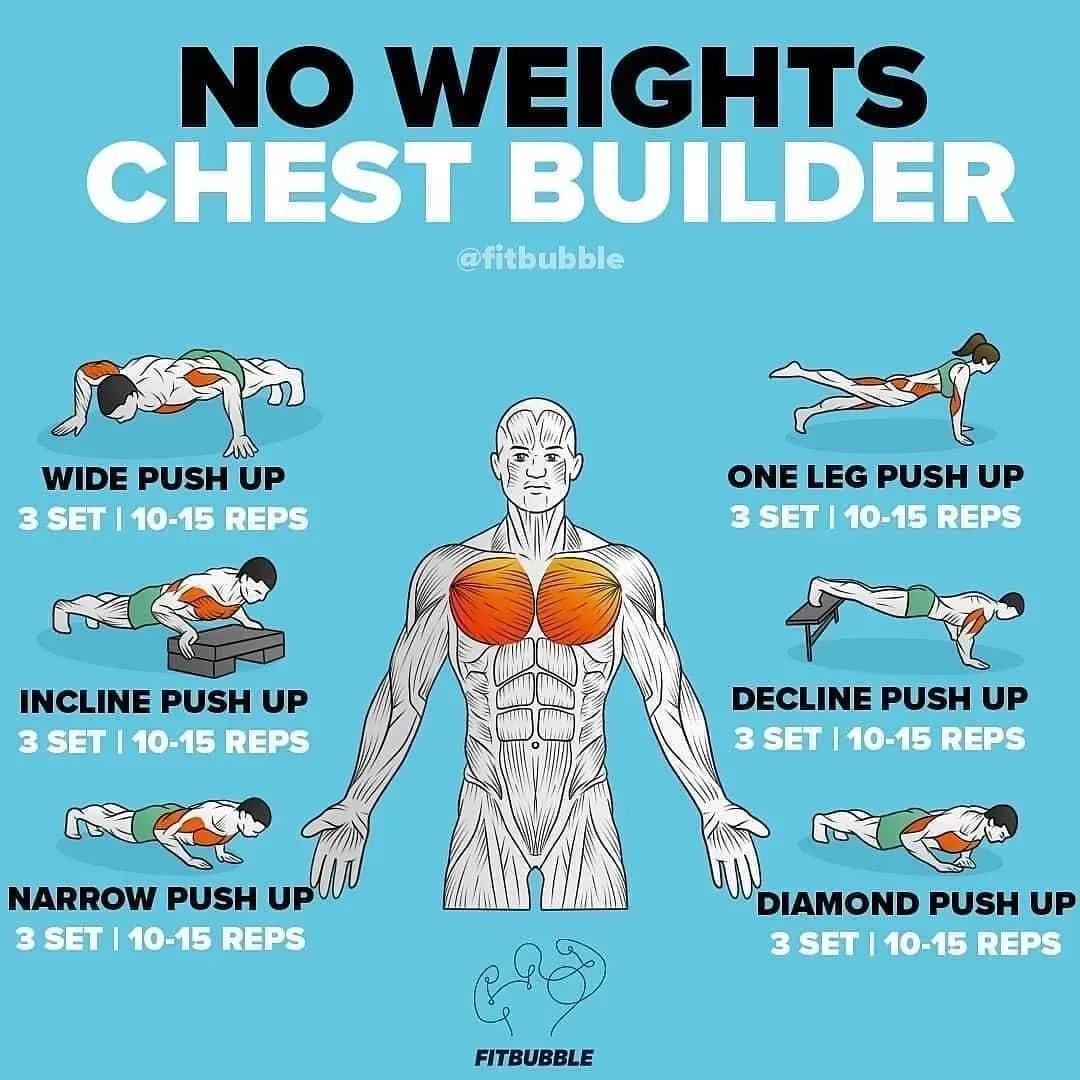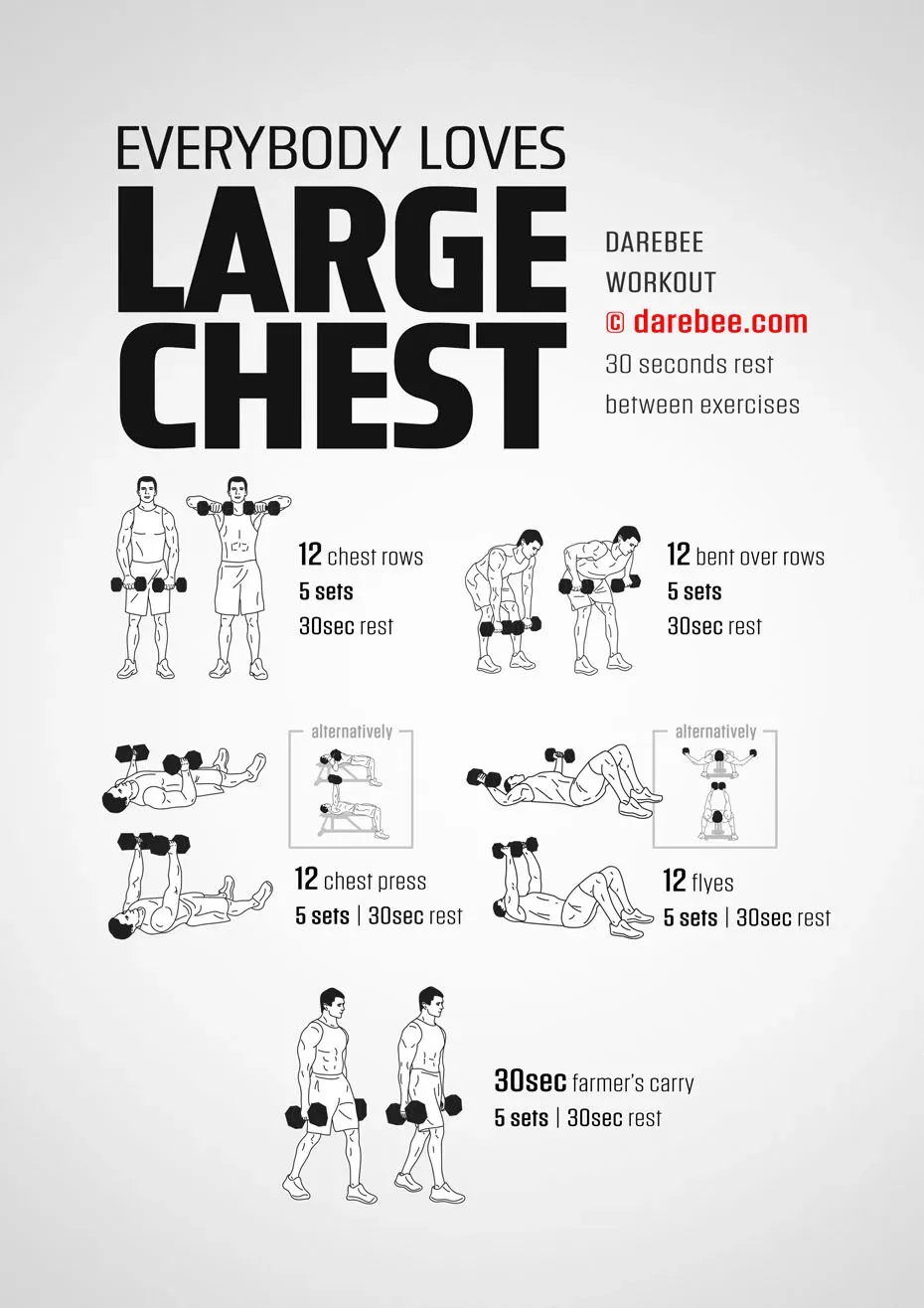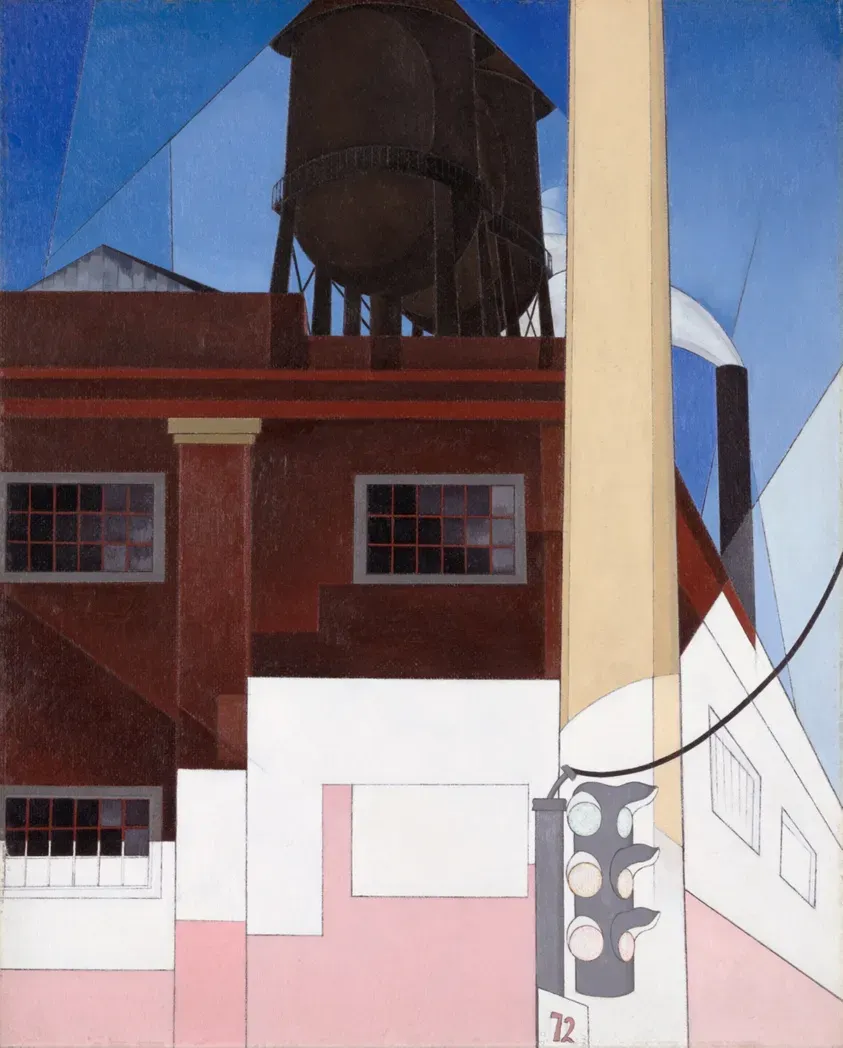Table of Contents
Let's be honest. When you think about building a serious chest, images of heavy barbells and complicated machines at a crowded gym probably pop into your head. Maybe you've wondered if it's even possible to get noticeable results just using your living room floor. The good news? Building a big chest at home isn't some fitness myth peddled by influencers with questionable photoshop skills. It's absolutely achievable, provided you know which movements actually work and how to put them together effectively.
Can You Really Build a Big Chest at Home?

Can You Really Build a Big Chest at Home?
The Skepticism is Understandable, But Unfounded
let's tackle the elephant in the room right away. Can you *really* build a big chest at home? I get why you might doubt it. Most fitness magazines and social media feeds blast images of guys benching small cars. It looks like you need serious iron to forge serious pecs. But honestly, that's just one path. Your body doesn't actually know the difference between pushing a heavy barbell and pushing your body weight against the floor – it just knows resistance. If you can provide sufficient resistance and challenge your muscles progressively, they will grow. Period.
Thinking you need a fully equipped gym to get results is like thinking you need a five-star kitchen to make a decent omelet. Sure, fancy tools help, but the core principle is simple: apply heat to eggs. For muscle, the core principle is apply tension and resistance. A well-executed push-up, done correctly and made progressively harder, is a potent chest builder. Don't let the simplicity fool you.
It's All About Progressive Overload, Not Just Heavy Weight
Muscle growth, or hypertrophy if you want to get technical, happens when you challenge your muscles beyond their current capacity. This challenge forces them to adapt by getting bigger and stronger. This principle, called progressive overload, doesn't *require* adding more weight plates. It can be achieved in a bunch of ways when you're doing a big chest workout at home.
Think about it: if you can only do 10 regular push-ups today, but next month you can do 20, your chest has gotten stronger. If you move from standard push-ups to decline push-ups (feet elevated), you've increased the difficulty. If you slow down your reps, add pauses at the bottom, or switch to one-arm variations, you're also increasing the challenge. It's about making the exercise harder for your muscles, not necessarily heavier in terms of external load.
- Increase reps or sets
- Improve exercise form
- Slow down tempo (time under tension)
- Add pauses (especially at the bottom)
- Reduce rest time between sets
- Move to a harder variation (e.g., incline to flat to decline push-ups)
- Use unstable surfaces (carefully!)
Making Bodyweight Workouts Challenging Enough
The key to making a big chest workout at home effective is finding ways to keep that progressive overload happening. Once standard push-ups get easy, you don't just do a hundred of them. That builds endurance, not necessarily size. You need to find variations that push you into that sweet spot for muscle growth – typically where you can do 8-15 controlled repetitions before your muscles are truly fatigued.
This is where understanding different push-up variations comes in handy. Elevating your feet increases the load on your upper chest. Bringing your hands closer together targets the inner chest. Using rings or unstable surfaces forces your stabilizers to work harder and increases the range of motion. Even small adjustments can make a familiar exercise feel brand new and brutally effective.
Essential Exercises for a Big Chest Workout at Home

Essential Exercises for a Big Chest Workout at Home
Mastering the Humble Push-Up
let's talk about the cornerstone of any big chest workout at home: the push-up. Seriously, don't underestimate this classic. It's the foundation. A perfect push-up involves keeping your body in a straight line from head to heels, lowering your chest towards the floor by bending your elbows (aiming for about a 90-degree angle or lower), and then powerfully pushing back up. Your hands should be roughly shoulder-width apart, maybe slightly wider, and positioned so your wrists are under your shoulders at the top.
Focus on feeling the contraction in your chest muscles at the top and controlling the movement on the way down. If you can't do a full push-up yet, start on your knees. The goal is to build the strength and control to eventually perform full reps with good form. Nobody built a great chest by doing sloppy half-reps. Consistency and form trump quantity every single time.
Variations to Keep the Gains Coming
Once standard push-ups feel too easy – meaning you can comfortably bang out more than 15-20 quality reps – it's time to switch things up. This is where the "progressive" part of progressive overload really shines in a big chest workout at home. Elevating your feet on a chair or bench turns it into a decline push-up, hitting the upper chest more. Placing your hands on an elevated surface (like a counter or sturdy table) makes it easier if full push-ups are still too tough, allowing you to work towards the full movement.
Bringing your hands closer together (diamond push-ups) puts more emphasis on the triceps and inner chest. Wide-grip push-ups target the outer chest more. Adding instability with rings or even stacking books (carefully!) forces your stabilizing muscles to work harder and increases the range of motion, providing a deeper stretch at the bottom. These aren't just random moves; they're strategic tools to keep challenging your muscles.
Push-Up Variation | Primary Focus | Difficulty (Relative) |
|---|---|---|
Standard Push-Up | Overall Chest, Triceps, Shoulders | Base |
Incline Push-Up | Lower Chest | Easier |
Decline Push-Up | Upper Chest | Harder |
Diamond Push-Up | Inner Chest, Triceps | Harder |
Wide-Grip Push-Up | Outer Chest | Standard/Slightly Harder |
Beyond the Basic Push-Up
While push-ups are king, they aren't the *only* exercise for a big chest workout at home. If you have resistance bands, they can add significant tension, especially at the top of the movement where push-ups tend to get easier. Loop a band around your back and hold the ends in your hands during push-ups for added resistance. You can also anchor a band and perform chest presses or flyes standing or kneeling.
Furniture sliders or even towels on a smooth floor can be used for sliding chest flyes, giving you that crucial squeezing movement that push-ups don't fully provide. Just kneel down, place your hands on the sliders/towels, and slide your arms out to the sides with a slight bend in your elbows, squeezing your chest as you bring them back in. These supplemental movements help round out your chest development and hit the muscle fibers from different angles, contributing to that fuller look.
Structuring Your Big Chest Workout at Home Routine

Structuring Your Big Chest Workout at Home Routine
Consistency and Frequency are Key
Alright, you've got the exercises down. You know push-ups are your bread and butter, and variations keep things spicy. But just knowing the moves isn't enough. You need a plan. Hitting your chest muscles consistently is far more important than doing one epic, marathon session every month. Your muscles respond best to regular stimulus, followed by adequate recovery. For most people looking to build a big chest at home, hitting your chest muscles 2-3 times per week works well.
This allows for enough frequency to signal growth without overtraining, which can actually hinder your progress. Think of it like watering a plant – small, regular watering is better than drowning it once in a while. Schedule your big chest workout at home sessions like any other important appointment. Put them on your calendar. Life gets busy, and if you leave it to chance, those workouts often just don't happen.
Designing Your Session: Sets, Reps, and Rest
Now, what does a single big chest workout at home session actually look like? You want to select 3-5 exercises that target the chest from slightly different angles (e.g., standard push-ups, decline push-ups, and maybe band flyes if you have bands). For muscle growth, aim for 3-4 sets per exercise. The number of repetitions per set should fall in that sweet spot we talked about earlier: 8-15 reps, where the last few reps are genuinely challenging and you feel like you couldn't do many more with good form.
Rest time between sets matters too. Too short, and you won't recover enough to perform well on the next set. Too long, and you lose intensity. For hypertrophy, resting 60-90 seconds between sets is usually sufficient. Use that time to catch your breath, shake out your arms, and mentally prepare for the next set. Don't scroll endlessly through your phone – stay focused.
Here’s a sample structure you could follow:
- Warm-up: 5-10 minutes (light cardio like jogging in place, arm circles, dynamic stretches)
- Exercise 1 (e.g., Standard Push-ups): 3-4 sets of 8-15 reps, 60-90 seconds rest
- Exercise 2 (e.g., Decline Push-ups): 3-4 sets of 8-15 reps, 60-90 seconds rest
- Exercise 3 (e.g., Diamond Push-ups): 3-4 sets of 8-15 reps, 60-90 seconds rest
- Exercise 4 (Optional, e.g., Band Flyes or Sliding Flyes): 3-4 sets of 12-20 reps, 60 seconds rest
- Cool-down: 5 minutes (static chest and triceps stretches)
Warm-up, Cool-down, and Recovery
Skipping your warm-up is like trying to start a cold engine in winter – things are going to feel stiff and awkward, and you increase the risk of something snapping. A proper warm-up gets blood flowing to the muscles, increases flexibility, and prepares your joints for the work ahead. Spend 5-10 minutes doing some light cardio, arm circles, and dynamic chest stretches before you dive into your first set of push-ups.
Equally important is the cool-down. Don't just collapse on the floor when you finish your last rep. Spend another 5 minutes doing some static stretches, holding each stretch for 20-30 seconds. This helps improve flexibility over time. And finally, recovery is where the magic happens. Your muscles don't grow *during* the workout; they grow *after* it, when you're resting and refueling. Ensure you're getting enough sleep and eating enough protein to support muscle repair and growth. Ignoring recovery is a surefire way to stall your big chest workout at home progress.
Troubleshooting Your AtHome Chest Gains

Troubleshooting Your AtHome Chest Gains
Stalled Progress? It's Probably Progressive Overload
so you've been hitting your big chest workout at home consistently for a few weeks or months, following the plan, doing your push-ups and variations. But lately? Things feel... stuck. You're not adding reps, not moving to harder variations, and the mirror isn't showing the love it used to. This is the classic sign that you've stopped providing sufficient progressive overload. Your muscles have adapted to the current stimulus. Doing the same 15 standard push-ups three times a week won't build a bigger chest indefinitely; it just maintains what you have.
You have to actively seek out ways to make the workout harder. Are you still doing knee push-ups when you could be doing full ones? Can you elevate your feet higher for decline push-ups? Have you tried slowing down the lowering phase (the eccentric portion) of the movement? Even small tweaks, like pausing for a second at the bottom of each rep with your chest hovering just above the floor, can significantly increase the tension and challenge. Don't just go through the motions; push the envelope.
Are You Actually Hitting Your Chest? Form Matters More Than You Think
Another common snag is simply not engaging the chest muscles properly during your big chest workout at home. It's easy for push-ups to turn into triceps or shoulder exercises if your form is off. Are your elbows flaring straight out to the sides? That puts a lot of strain on your shoulders and reduces chest activation. Aim for your elbows to be at about a 45-degree angle relative to your body.
Are you letting your hips sag or arching your back? This disengages your core and takes tension away from the chest. Keep that straight line from head to heels. Focus on the mind-muscle connection – consciously squeeze your chest muscles as you push up. If you finish a set and only feel it in your arms or shoulders, review your form. Sometimes filming yourself from the side can highlight issues you don't even realize you have.
Is your form correct, or are you just moving from point A to point B?
Recovery and Fuel: The Unsung Heroes
You can have the most perfectly structured big chest workout at home, nail every rep with flawless form, and still see minimal gains if you're neglecting recovery and nutrition. Muscle doesn't grow during the workout; it grows when you're resting and rebuilding. Are you getting enough sleep? Most adults need 7-9 hours per night, and that's non-negotiable for muscle repair.
What about your diet? Protein is the building block of muscle. Are you consuming enough protein throughout the day to support the growth you're trying to stimulate? Aim for roughly 0.7 to 1 gram of protein per pound of body weight. Skipping meals or relying on junk food won't give your body the raw materials it needs to build a bigger chest. Think of sleep and protein as essential components of your big chest workout at home plan, not optional extras.
Your Big Chest at Home: The Bottom Line
So, can you build a significant chest without stepping foot in a gym? As we've laid out, the answer is a definitive yes, provided you ditch the random flailing and apply structure and progressive challenge to your big chest workout at home. It won't happen overnight, and you won't suddenly look like a competitive bodybuilder using only bodyweight, but consistent effort with the right movements will yield tangible results. Focus on mastering the fundamentals, continually pushing your limits within those exercises, and staying patient. The equipment might be minimal, but the potential for growth, for a chest you're actually proud of, is very real.
